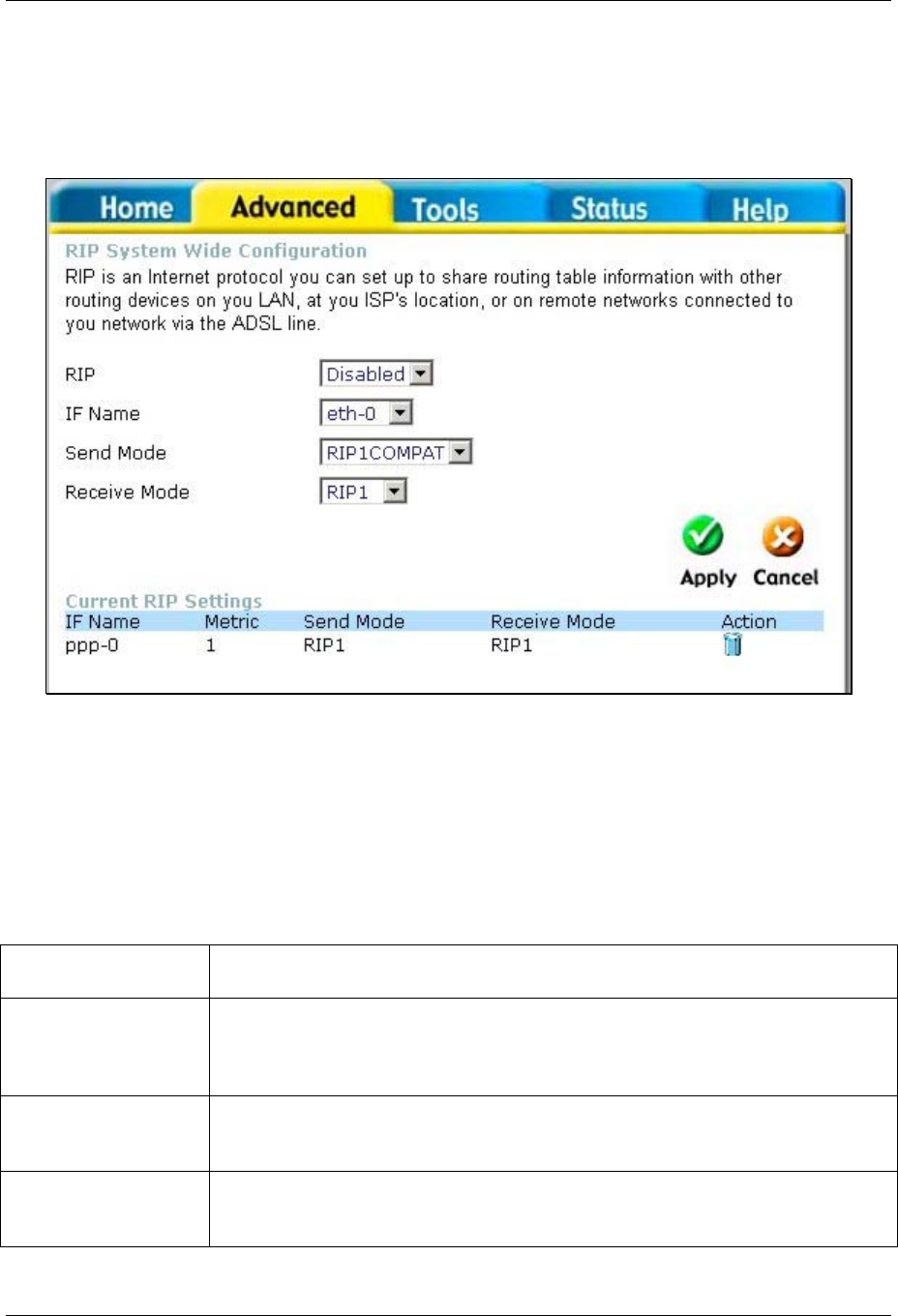
DSL-504G ADSL Router User’s Guide
43
RIP
The Router supports RIP v1 and RIP v2 used to share routing tables with other Layer 3 routing devices on your
local network or remote LAN. If your network does not employ another IP routing device, it will not be
necessary to enable RIP.
Figure 4- 7. RIP menu
RIP can be enabled on any existing WNA or LAN interfaces. It may be specified to receive RIP requests and
reply to them, it can be specified to send RIP queries, or to both receive and send RIP packets. Furthermore, the
RIP version can be specified. The table below lists the parameters that can be specified for the pull-down RIP
menus. Click the Apply button to setup RIP as specified.
Current RIP configurations cannot be edited. To remove a RIP configuration, click on the trashcan icon for the
set. Remember to save the configuration changes.
RIP
Select Enabled to enable the RIP settings you are configuring here. Select
Disable to disable the RIP configuration.
IF Name
Select the Interface for which you are applying the RIP configuration.
Interface eth-0 represents the LAN. The ppp-X, eoa-X and ipoa-X represent
the WAN interface(s) according to connection types [ PPP, EOA (RFC 1483)
and IPoA ] and PVC identifier (0-7).
Send Mode
Select the version of RIP, if any, you want to send. Select RIPv1, RIPv2 or
RIP1COMPAT (RIPv1 and RIPv2) to transmit RIP requests. Select None
disable RIP requests.
Receive Mode
Select the version of RIP, if any, you will accept and reply to. Select RIPv1,
RIPv2 or RIP1COMPAT (RIPv1 and RIPv2) to receive RIP packets. Select
None disable RIP replies.


















